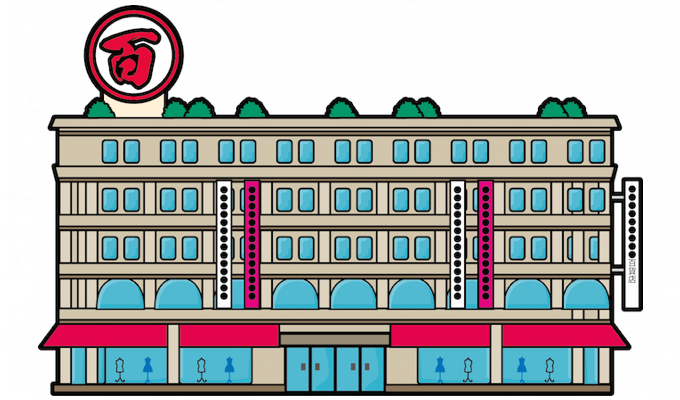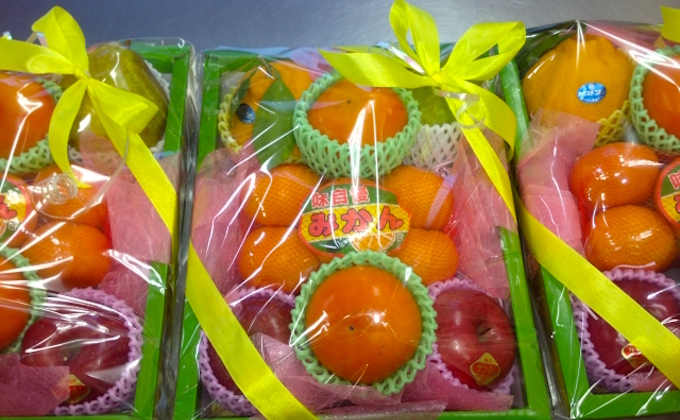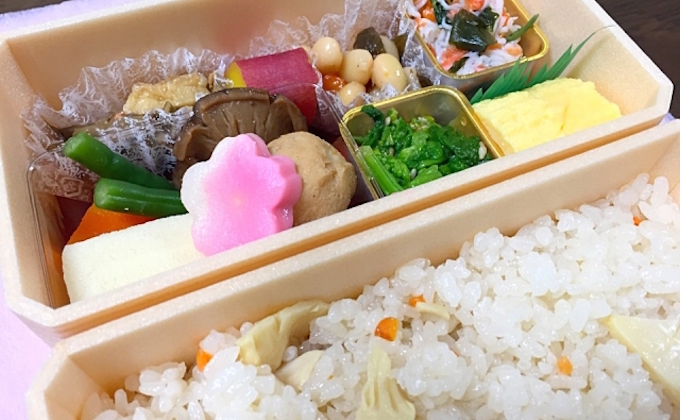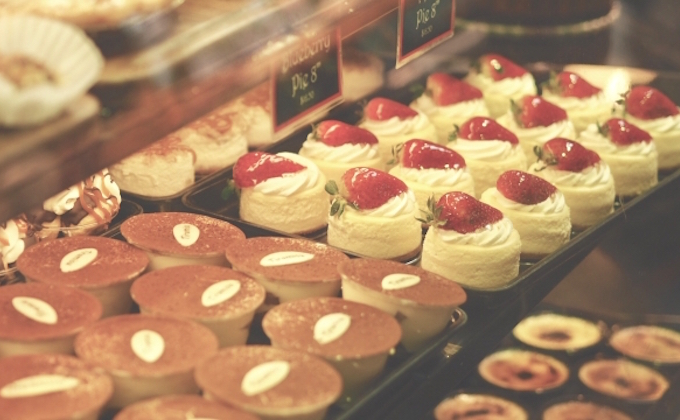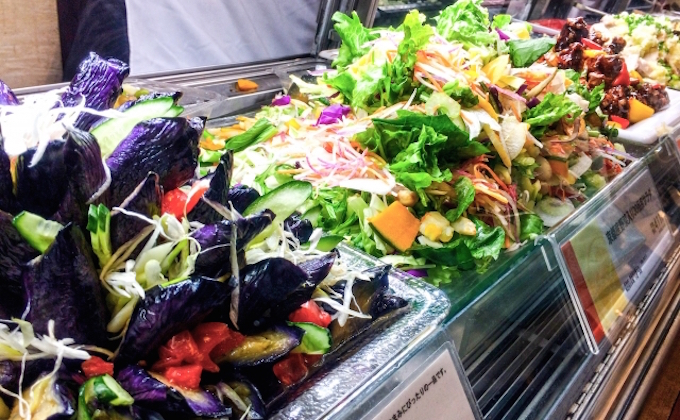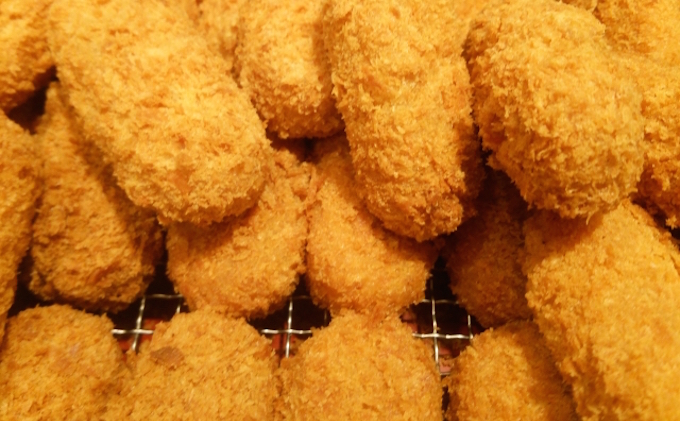TRG Info and Advice
“Depachika”: a foodie heaven that appeals to the five senses
What comes to mind when you think of a department store? Luxury brands? Cutting-edge fashion? Department stores in Japan have more to offer you. Many major department stores have food halls that fill the entire basement floor, or even encompass multiple levels. These subterranean food shops are called “depachika,” which is a combination of two words: “depato (department store)” and “chika (basement).” They are heaving with shoppers seeking ready-made meals for their weekday suppers, and at weekends they get crowded with even more consumers, who come to buy gifts or souvenirs. A depachika is a treasure-trove of delicious, gourmet food. In other words, it is a “food wonderland,” which certainly is an exciting spot for foodies.
You can find almost every type of food and drink you can imagine in a depachika, including quality fresh produce, bread, prepared foods (from tempura to Chinese dim sum), bento box lunches, sushi, Japanese and western confectionaries, tea, liquor, and more. Individually packaged vegetables, the highest-grade marbled Japanese wagyu beef, and unblemished, treasure-like fruits (three grapes can cost up to 1,000 yen!) are signature items of depachikas. While they are a convenient and popular place to pick up sweets, ready meals and box lunches, they are also affordable, while providing a little bit of luxury. The depachika is also a perfect place to look for nice souvenirs to bring back home.
The floor of the depachika is crammed with individual shops, some selling the same types of items. You can buy not only Japanese grocery items, but also import items sourced from around the world. Depachikas in Tokyo, especially, quickly reflect the latest food trends, and sell a great variety of products from all over Japan, and beyond. Sometimes there are limited items you can only find there.
A visit to a depachika will not only fill your stomach, but also please your eyes. A plethora of food items such as prepared foods and sweets are beautifully presented inside glass display cases. It is fun to just stroll through and look around. (Be careful, however, for they will certainly whet your appetite!)
Many ready-made meals, which are often available for purchase by weight, are prepared in small kitchens at the back of the shops, and you can enjoy them fresh from the oven/fryer. Some shops have free samples, too, so do not miss this opportunity to experience something new! There are also small eateries operated by famous restaurants where you can savor typical menus item without actually visiting the restaurants, and perhaps a juice bar – perfect when you need a break after shopping.
At a depachika, events such as regional-themed “bussanten (fairs)” are often held and special products are sold for a limited period. The items depachikas sell are seasonal and annual event-oriented, so whenever you visit, you will find something different and new. For example, on St. Valentine’s Day in Japan, women typically give chocolate to men whom they are in love with. Therefore, during the weeks prior, depachikas get crowded with shoppers seeking out the perfect gift! In the weeks before the New Year, you can find shops selling ingredients for zouni (a special soup dish prepared with rice cakes and consumed in the beginning of January) and osechi ryori (special cuisine prepared and eaten at the beginning of January). Shops also take bookings for osechi ryori, which is served in gorgeous, multi-layer lacquered boxes.
Popular items at depachikas draw great attention from the media. So, it is not rare to see people queuing up for the items right after the store opens, because they sell out pretty quickly.
A few hours before closing time (usually around 8:00pm), shops start reducing perishable items with discount stickers, so around 5:00pm is the best time to explore the depachika nearest you.
What about getting what you like at your local or favorite depachika and having an impromptu picnic on the store’s rooftop terrace, or in a neighborhood park?
You can find different things at different depachikas, so depachika-hopping could also be fun!
Note: If you would like to enjoy the food items you bought right away, don’t forget to ask for chopsticks, spoons, etc! Please, do not eat while walking within the department store.
Tokyo Convention & Visitors Bureau organizes a guided tour called: “Streets of Shinjuku and Basement of Department Store.” This tour is available in seven languages. For details, please call Tokyo Tourist Information Center at 03-5321-3077 (line is open from 9:30 am to 6:30 pm).
TRG's Picks
Takashimaya Shinjuku
Takashimaya is one of the oldest department stores in Shinjuku, with a history of 180 years. Its depachika takes pride in the variety of food items purchased from long-established shops or famous shops in every corner of Japan. You can encounter delicious goodies from around Japan while you are in Tokyo.
Isetan Shinjuku
Isetan Shinjuku has “Isetan Men’s,” a whole building dedicated exclusively to men’s fashion, and is considered a leading fashion trendsetter in Japan. Boasting a wide variety of both Japanese and western sweets, which reflect the latest trends, the depachika of Isetan Shinjuku features weekly and temporary guest-shops to introduce well-known sweets shops or patissiers.
There is also a rooftop terrace, which is the perfect place to try out what you bought right after cruising the depachika!
Restaurant, Café and Food Guide (in English and Chinese)
http://my.ebook5.net/isetanmitsukoshi/fcs_restaurant/
Daimaru Tokyo
The depachika of Daimaru Tokyo is well-known for its myriad of bento box lunches. They sell a surprisingly extensive range. Look out, too, for the “Tokyo Shitamachi Oyatsu” (downtown sweets) area, where you can find Japanese sweets of long-established patisseries in Tokyo that are, apart from the shop, available only at Daimaru Tokyo.
Ginza Mitsukoshi
The second and third basement floors are dedicated to food items. In the specialty sweets section, “Kayu-an,” they sell delicious Japanese and western confectionery from all around Japan. A shop specializing in sandwiches sells colourful and voluminous sandwiches that are not to be missed. Grab what you like at the depachika, and enjoy a picnic in the spacious rooftop garden terrace.
SEIBU Ikebukuro
Serving about 70 million customers a year, SEIBU Ikebukuro is one of the most favorable among consumers, and also boasts the highest number of face-to-face sales a year. The depachika of SEIBU Ikebukuro grew popular because of its overwhelmingly well-stocked food shops, which fuelled the depachika boom. The roof garden is equipped with a terrace restaurant and food stalls, where you can enjoy a relaxing meal and takeaways.
Tobu Ikebukuro
Tobu Ikebukuro boasts one of the largest food halls among all depachikas. The first basement floor is crammed with about seventy individual shops which sell Japanese or western sweets. Very popular, regional-themed “bussanten (fairs)” are held more than twenty times a year, along with the store’s Chiba location. Food products of famous shops selling in Tokyo for the first time, limited edition items available only at Tobu, and demonstration sales lure in customers.






